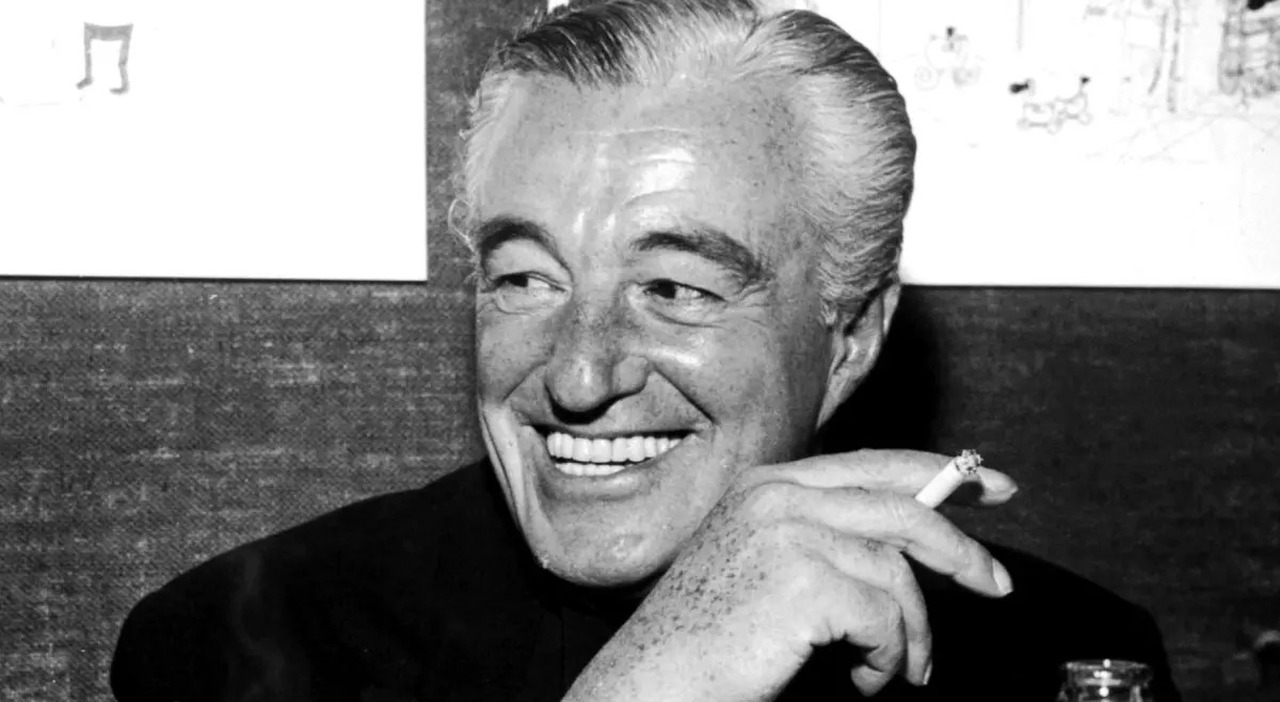
The cinematic world bids a poignant farewell to Enzo Staiola, the remarkable Italian child actor whose soulful, sad-faced portrayal of Bruno Ricci in Vittorio De Sica’s 1948 neorealist masterpiece, ‘Ladri di Biciclette’ (Bicycle Thieves), etched his image permanently into film history. Staiola passed away on June 4, 2025, in Rome at the age of 85, with Italian newspaper La Repubblica being among the first to report his death. Complications from a fall were later confirmed as the cause by a family friend, an Italian journalist named Emanuele Carioti.
Staiola’s performance, captured at the tender age of eight, resonated deeply with audiences and critics alike, making him an international sensation in a film that would go on to win an Academy Award for Best Foreign Film. His expressive eyes and silent dignity as he followed his anguished, impoverished father through the streets of post-war Rome became a powerful symbol of childhood innocence grappling with harsh realities, a role that many consider the emotional core of one of the greatest films ever made.
Though his name might not be as widely recognized as some of his adult counterparts, Staiola’s contribution to cinema is profound. He embodied the raw, authentic spirit of Italian neorealism, a movement that sought to depict the grim realities of a nation rebuilding after the Second World War. This article honors his life, his accidental journey into stardom, and the enduring power of a performance that continues to captivate and move generations of film enthusiasts around the globe.

1. **The Passing of a Cinematic Icon: Enzo Staiola, Child Star of ‘Bicycle Thieves,’ Dies at 85** The news of Enzo Staiola’s death on June 4, 2025, at 85 years old, marks the end of an era for many who cherish the golden age of Italian neorealism. His passing, widely reported by the Italian press including La Repubblica, reminds us of the profound impact a single, powerful performance can have, especially one delivered with such raw honesty by a child. While no immediate cause of death was initially given by La Repubblica, later reports from family friends clarified that complications from a fall in a hospital led to his demise.
Staiola’s age at his passing, 85, highlights a remarkable span of life that began well before his iconic role, and continued long after he stepped away from the glare of the film set. Born on November 15, 1939, in Rome, his life transcended his brief but brilliant cinematic career, eventually leading him to a quiet, respected existence far from the public eye. His death invites us to revisit the masterpiece that brought him global recognition and to appreciate the unique circumstances that shaped his unforgettable contribution to film.

2. **‘Bicycle Thieves’: A Defining Pillar of Italian Neorealism and Global Cinema** Vittorio De Sica’s ‘Ladri di Biciclette,’ known in English as ‘Bicycle Thieves’ or sometimes ‘The Bicycle Thief,’ stands as a monumental achievement in cinematic history, routinely cited as one of the greatest films of all time. Released in Europe in 1948 and in the United States a year later, it became a seminal work of Italian neorealism, a movement characterized by its stark, realistic portrayal of post-war Italian life, often using non-professional actors and shooting on location to achieve an unparalleled sense of authenticity.
The film’s premise is deceptively simple yet profoundly resonant: Antonio Ricci, an impoverished father, desperately searches the war-torn streets of Rome for his stolen bicycle, without which he cannot work and feed his young family. This quest, undertaken with his young son Bruno (played by Staiola) by his side, transforms into a powerful allegory for human dignity, desperation, and the harsh realities of survival. Its global acclaim was immediate, culminating in an Academy Award for Best Foreign Film in 1950 and influencing countless filmmakers worldwide. Robert S.C. Gordon, a film historian, eloquently described it in his 2008 book as “a fundamental staging post in the history of the European cinema.”

3. **Bruno Ricci: The Steadfast Son and Emotional Center of De Sica’s Masterpiece** While Lamberto Maggiorani, a real-life factory worker cast to embody working-class authenticity, played the forlorn father Antonio Ricci, it was Enzo Staiola’s portrayal of his son, Bruno, that truly anchored the film’s emotional weight. Bruno is not merely a sidekick; he is presented as a “little man,” initially seen tending to his father’s bike with the seriousness of an adult mechanic, serious and earnest. His unwavering presence throughout Antonio’s desperate odyssey transforms the narrative from one of a single man’s struggle to a shared, poignant experience of intergenerational despair and resilience.
Staiola, through his memorably big and expressive eyes, conveyed a depth of feeling that belied his young age. Critics, including Bosley Crowther of The New York Times, singled out his performance, noting that he played Ricci’s “small son with a firmness that fully reveals the rugged determination and yet the latent sensitivity of the lad.” Whether stoically enduring rain, the jeers of peddlers, or the scorn of onlookers, Bruno’s silent support and eventual heartbreak make him his father’s emotional equal. Crowther called one episode, in which Ricci, desperate in his frustration, slaps the little boy, “one of the most overpowering incidents in the film.” His portrayal of disillusioned innocence was pivotal to the film’s enduring impact and its immediate emotional resonance with contemporary audiences, culminating in one of cinema’s most iconic and heartbreaking final moments as he takes his father’s hand.

4. **A Serendipitous Encounter: De Sica’s Street-Side Discovery of Young Enzo** Enzo Staiola’s entry into the world of cinema was not through conventional auditions but a stroke of pure serendipity, a narrative as compelling as the film itself. The legendary Italian director Vittorio De Sica, already renowned for his acting, was actively searching for a boy who possessed “very human eyes and a strange face” to play Bruno, a character he had envisioned from Luigi Bartolini’s 1946 novel. His search was proving difficult, as he sought an authenticity that professional child actors often couldn’t provide.
As Staiola recalled in a July 2023 interview with La Repubblica, his discovery unfolded on the streets of Rome after school. “I was coming back from school and at a certain point I noticed this big car following me at walking pace,” Staiola explained. From this elegant vehicle emerged De Sica, a “gentleman with gray hair, all dressed up.” His direct question, “What’s your name?”, met with a child’s wary silence, a reflection of his mother’s advice not to be too familiar with strangers. Yet, De Sica, recognizing something profoundly right about the boy, would not be deterred, setting the stage for a cinematic miracle.

5. **Overcoming Parental Reservations: The Challenge of Bringing Enzo to the Screen** De Sica’s initial street-side encounter with Enzo Staiola was just the first hurdle in securing his iconic child actor. Following young Enzo home, the celebrated director found his parents, who, despite recognizing De Sica as a famous actor for years in Italy, were initially reluctant to let their son venture into filmmaking. As Staiola recalled in his 2023 interview, “He sat at the table in our house and tried to convince them to let me act in his new film. But they didn’t want to.” This parental resistance stemmed from concerns about the disruptive nature of the film industry on their child’s life, a sentiment Enzo himself would echo later in life.
It took further persistence and a crucial intervention to persuade the Staiola family. Enzo’s uncle eventually took him down to De Sica’s studio for a reintroduction, bypassing the initial reluctance of his parents. The director’s determination to cast Enzo, combined with what Staiola later described as “an exaggerated sum” — a generous fee of 300,000 lire — ultimately swayed his parents. His father, in a moment of both humor and earnestness, reportedly told him, “If you don’t go to work tomorrow I’ll kill you,” signaling their eventual acceptance and the start of an extraordinary, albeit brief, cinematic journey.

6. **The Audition and a Bicycle: Enzo’s Path to His Defining Role** Despite De Sica’s instant conviction that Enzo Staiola was the boy he had been searching for, the path to securing the role of Bruno Ricci involved an unexpected process, and a touch of wistful regret from Enzo himself. De Sica, having identified Enzo, reportedly held auditions the very next day in the Via Capo d’Africa, near where Enzo lived. “He came up to me and said, ‘He’s the one,’” Staiola recounted in a 2016 television interview, marking the director’s firm decision.
However, Staiola also revealed that he wasn’t simply handed the role. He “auditioned for over a month,” working on scenes alongside another candidate, Enzo Cerusico, who had initially been cast in the role. In the end, De Sica chose Staiola, but not without a consolation prize for his rival: a bicycle. Staiola, with a touch of youthful longing, admitted, “I wanted the bicycle.” This anecdote, shared years later, offers a charming glimpse into the mind of a child actor who, despite landing a career-defining role, harbored a simple desire for a common childhood treasure, underscoring his “ordinary person” persona that De Sica so valued.


:max_bytes(150000):strip_icc():focal(919x599:921x601)/kelly-clarkson-brandon-blackstock-1-9eabc0058e1a4b6c8bc26e0923da6cfd.jpg)

